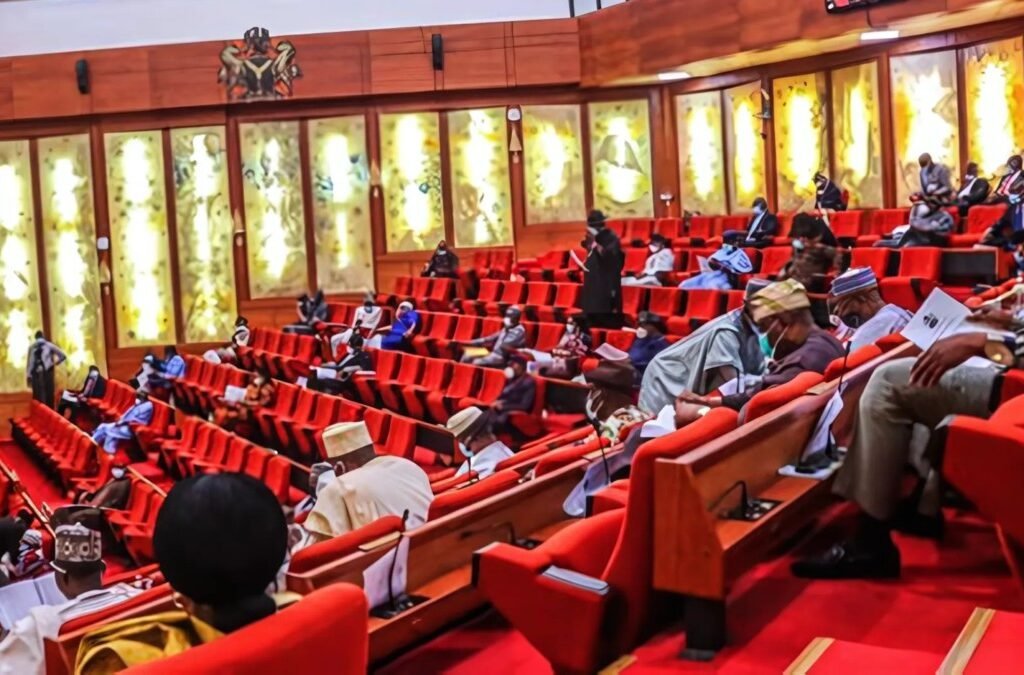NASS
The National Assembly of Nigeria
Embodying the principles of democracy, representation, and the rule of law, ensuring that the voices of Nigerians are heard.
The National Assembly:
The Legislative Arm of the Federal Government of Nigeria
Nigeria’s parliamentary history stretches back to the colonial and post-independence periods. However, much of its defining growth has taken place in the Fourth Republic, which began with the return of democratic rule in 1999. Since then, the country has witnessed six consecutive legislative assemblies, spanning over two decades of uninterrupted democracy.

The Legislature
Nigeria operates a bicameral legislature, consisting of two independent chambers — the Senate and the House of Representatives.
The Senate – The Red Chamber
The Senate is made up of 109 members, with three senators representing each of the 36 states, while the Federal Capital Territory (FCT) elects one senator. This ensures equal representation across the federation.
The chamber is presided over by the President of the Senate, supported by the Deputy Senate President and eight principal officers, including the Majority and Minority Leaders (and their deputies), as well as the Chief Whips and their deputies.
The House of Representatives – The Green Chamber
The House of Representatives comprises 360 members, each representing a federal constituency. Unlike the Senate, constituency distribution is based on population size, which means more populous states have a higher number of representatives.
The chamber is led by the Speaker of the House, assisted by the Deputy Speaker and eight principal officers, including Majority and Minority Leaders, Whips, and their deputies.
The Committee System
Both chambers of the National Assembly operate through a committee system. Members are appointed to standing and special committees, where bills, motions, and other legislative proposals are studied, researched, and reviewed. The findings and recommendations of these committees are then presented to the respective chambers for consideration.
The Mission and Vision Statement
Vision:
To be a professional, proactive, efficient and effective bureaucracy of the legislature.
Mission:
To build a capable, disciplined and motivated workforce that will leverage on well developed human resources and modern technology to render excellent support services to the legislature.

The Senate - The Red Chamber
The Senate is composed of 109 members, with three senators representing each of the 36 states, while the Federal Capital Territory (FCT) elects one senator. This arrangement ensures equal representation across the federation.
The chamber is led by the President of the Senate, supported by the Deputy Senate President. In addition, there are eight principal officers: the Majority Leader, Deputy Majority Leader, Minority Leader, Deputy Minority Leader, Chief Whip, Deputy Chief Whip, Minority Whip, and Deputy Minority Whip.

The House of Representatives – The Green Chamber
The House of Representatives consists of 360 members, each representing a federal constituency. The number of constituencies per state is determined by population size, giving more populous states greater representation.
The chamber is led by the Speaker of the House, supported by the Deputy Speaker. Like the Senate, it also has eight principal officers: the Majority Leader, Deputy Majority Leader, Minority Leader, Deputy Minority Leader, Chief Whip, Deputy Chief Whip, Minority Whip, and Deputy Minority Whip.
NASS MANAGEMENT
Ensuring the smooth operation and administrative efficiency of the National Assembly.
The National Assembly is guided by a dedicated management team that ensures the smooth operation of its legislative, administrative, and strategic functions. From the Clerk of the National Assembly to the Secretaries overseeing vital directorates, this team provides professional support, continuity, and coordination across both chambers—enabling the legislature to function effectively and uphold democratic governance.
FUNCTIONS OF THE NATIONAL ASSEMBLY
Lawmaking
Enacting legislation for the peace, order, and good governance of the federation.
Oversight
Monitoring and supervising the activities of the executive branch and its agencies.
Representation
Articulating and advocating for the interests and concerns of constituents.
Appropriation
Approving the national budget and expenditures.
NASS ADMINISTRATIVE TEAM
Kamoru OGUNLANA
Designation: Clerk to the National Assembly (CNA) Directorate: Office of the Clerk to the National Assembly
Bashir Yero
Designation: Deputy Clerk of the National Assembly (DCNA) Directorate: Office of the CNA
Andrew O. Nwoba
Designation: Clerk, Senate Directorate: Senate Directorate
Rawlings Agada
Designation: Deputy Clerk, Legislative Directorate: Senate Directorate
Emmanuel Odo
Designation: Deputy Clerk, Admin Directorate: Senate Directorate
Dr ali barde umarou
Designation: Secretary, Admin Directorate: Research & Information
Yahaya DANZARIA
Designation: Clerk, House of Rep Directorate: House of Reps
Florence K. AMOS
Designation: Deputy Clerk (Legislative) Directorate: House of Reps
Vivian NJEMANZE
Designation: Deputy Clerk (Admin)
Directorate: House of Reps
Dr. Abubakar ALKALI
Designation: Secretary Directorate: Human Resources & Staff Development
Clement INYANG
Designation: Secretary
Directorate: Finance & Accounts
Navati ILIYA
Designation: Secretary
Directorate: Legal Services
Dr. Bashir HAMZA
Designation: Secretary
Directorate: Health Services
Dr. Obasi UKOHA
Designation: Secretary
Directorate: legislative Budget and Planning
Eyo E. ESSIEN
Designation: Secretary
Directorate: Zonal Liason Offices
Okon B. Ekpenyong
Designation: Secretary
Directorate: Inter Parliamentary Relations & Protocol
mofoluwake Ogunbayo
Designation: Secretary
Directorate: Parliamentary Security & Special Duties
Dr. Ali B. Umoru
Designation: Secretary
Directorate: Research and Information
Engr. Baba S. Liman
Designation: Secretary
Directorate: Estate and Works